Leaderboard
Popular Content
Showing content with the highest reputation on 27/01/17 in all areas
-
Just finished this for The Modelling News. I quite enjoyed this build, its your typical Kittyhawk kit though, Careful dry fitting and preparation of the parts will reward you with a kit that fits together with a minimum of filler. The model was finished with Gunze colours and the kit decals. If I was to build another one though, I would grab the Kinetic kit, only because you can make a SuE or SuM. The kittyhawk kit will only make a SuM , completed build7 , etendard5-1 by , Thanks for looking Bruce23 points
-
Maurice Farman was one of two brothers who each established aviation companies in France in the first decade of the 20th century and who went on to become important pioneers in the years immediately before 1914. Maurice designed a number of machines before the successful pusher layout with a front elevator was adopted. Looking a little like the Wright brothers "Flyer" and its derivatives, Farman followed an idea that was fashionable at the time that connected front and rear elevators helped with horizontal stability. This was M. Farman's first truly successful design which gained a number of records including a distance record of 350 miles in a closed circuit in 1910, and successive duration records between 1911 and 1913. (The Bristol Boxkite was a copy of this design, built by the British and Colonial Aeroplane Company from 1910 until 1914). Following the outbreak of hostilities a few went to France where they were used for reconnaissance but they were quickly withdrawn and from then on only used for training. However at least one machine found its way to the middle east where it was used for reconnaissance in the campaign in Mesopotamia against the Turks which eventually led to the siege of Kut in 1916. It was a robust, reliable machine which was relatively easy to fly and this, combined with its flying record meant that it was entered for the British Military aircraft trials held on Salisbury Plain in 1911. Following success in these trials a number of machines were ordered for the RFC and RNAS in 1911, and it was used for reconnaissance by 2, 4 and 6 squadrons RFC (where it was known as the S7), and training in the years leading to the First World War. Most MF 7's served in the UK as primary trainers until 1916. The French continued to use the type for reconnaissance on the western front until mid-1915 when they too withdrew it from front line duties and used it for training purposes. Most machines were built in France and equipped with 70 hp Renault engines, but some were built under licence in Bradford which were powered by 100 hp Sunbeams, and 47 others built in the UK were powered by 75 hp Rolls Royce Hawks. One aircraft was sold to Norway and this survives in a museum in Oslo: other machines are preserved in Paris and Brussels. Individual aircraft varied from each other as these were hand built, so the exhaust systems of the engines varied, and some later aircraft had fold-down extensions of the upper main-planes, while others had narrow chord lower planes. I have seen photographs of RFC machines with rudder stripes but have not found any with other markings except for the number 12 applied in chalk or white paint on the rudders of the machine at the trials in 1911. I assume that serial numbers were carried on RFC and RNAS machines as was customary prior to August 1914 and possibly Union Jacks were carried on the underside of the lower wings on machines sent to France. However I have tried to represent a machine in early 1914 and because I could not find a photo of one with a serial I have omitted the latter detail. The model represents a "standard" RFC machine with a 70hp Renault engine with one of at least two exhaust systems for this engine. No armament was carried by MF 7's unless the pilot or observer took up a personal weapon. I am not sure where the name "Longhorn" comes from, but it could be the pilot's control column which had two long arms at the top which vaguely remind one of the long horns on highland cattle. It is said that aircraft riggers at the time used to release a pigeon inside the aircraft to see if it could escape - if it could there was a wire missing. There are approximately 200 wires on this model, but if anyone has a 1/72 scale flying pigeon please could I borrow it to check if I have left any off? There is a build log on Airfix Tribute Forum - scratch builds. Thanks for looking. P13 points
-
Pretty quick build and one for my own collection for a change, just over two weeks work from start to finish, if i ever come get another one i think i might do a NMF version. Overall a nice kit to build, the only thing that lets it down are the deep old panel lines, but having done a few Anigrand kits that is par for the course. The landing gear i thought was going to be an issue but it is quite steady even with all the weight of the resin.After getting the base coat on i just added some random panel variations to break up the surface. The real thing if we can call it that is quite glossy and patchy but its kind of dificult to get to fussy with this sort of thing as its not real so you dont really have a lot to work with, i suppose that is also a good side to sci fi work, no real right or wrong. Last thing to do was decal and assemble, job done, yes the air brakes are up. Thanks for looking. Regards.Danny.13 points
-
Mitsubishi A5M4 Claude, Imperial Japanese Navy, I N J Kaga, Finemolds 1/48th scale Click on WIP to see the build thread. The kit contained 67 parts, and apart from the seat harness, was built straight out of the box including decals. It was painted with Aclad II, Aeromaster & Tamiya Acrylics. Thanks for looking, Joe.12 points
-
This is a kit that I built last year before I joined the forum but I photographed it recently along with some fresh models and here it is ps: The scheme is of course pure fiction . cheers11 points
-
After a long building project I have o call this project finish. I have tried to create a Dh Venom NF 51 aka Swedish Airforce J 33 in 1/48 scales. I have parts from three different kits. Nose and cockpit are from Classic Airframes Vampire NF 10, wings and midsection are Classic Airframes Venom FB 4, and tailbooms are from Aeroclub Sea Venom. It has not been a shake and bake kit at all. Parts has to be modified, I have used at least a half tube of filler. This project has spent a lot of time on the “shelf of doom”, especially since I got the news that Pilot Replicas are working on a Venom series, but a good friend told me, “finish the project and move on”, and so I did. Nicklas IPMS Sweden Some not so good pictures. This fellow help me along the time.10 points
-
Trumpeter 1/48 plus Eduard PE. Very fast and simply kit. Markings - AztecDecals - "GhostSquadron" Fuerza Aerea Mexicana I invite to comment. Regards Jurek9 points
-
A few firsts for me here, including 1) my first completed scratchbuilt model, 2) my first attempt at replicating water and, crucially, 3) my first attempt at using my smartphone to link photos from PB. What could possibly go wrong? The model is made from plastic card, stretched sprue and small pine pieces for the floats. The pilot figure is carved from plastic scrap and the prop started life as a toothpick. I deliberately didn't rig it, add much detail or create 3-D wing rib detail as life is too short; it was really refreshing to work in a small scale and not worry about such things. The muddy river water is simply clear silicone sealant applied over a painted skim of woodfiller, textured with a flat wooden strip and more sealant added for the wake, with white paint touched in where appropriate. I went to last year's Bridlington & Wolds show at Driffield and was completely taken by the display of 1:144 models, especially those that were scratchbuilt and, in particular, the collection of Blackburn models. The approach of suggesting rather than incorporating detail was a revelation; I don't know the builder's name but, if you read this, thanks for the inspiration! Right - now to see if those link thingys work. Here goes...! Jon9 points
-
Is it really too much to ask that we put a full title to our threads so that members don't have to actually read the article to find out what it is about? For example, seeing a thread called "How can I..." does my nut in! Rant off. Dave9 points
-
More decals .... DJRP pod Wheel bay doors stencils Pylons: Rocket pods: Drop tanks Aircraft bottom side; luckily very few here including a very tiny one, hardly noticeable, front part of bottom wing tip: I'm almost half way through .... Ciao8 points
-
G'day people, Here are some pics of the kit ejection seat going together, First job was to tidy up the seam that passes through the headbox, Next up the addition of some of the PE belts as well as some additional details that were missing Next up , a splash of paint to see what we are dealing with. I do not like the pre-painted PE belts. Apart from not getting the colours right, the paint tends to flake off if you bend the belts too much. I prefer to brush paint them instead. And finally a quick test fit, cheers, Pappy8 points
-
I was watching. I don't know if this will help or hinder but . . . . Dark Olive Drab 41 was a permanent camouflage paint introduced, following a series of tests, in AAF Bulletin 41 issued in September 1940. It was promulgated as the standard upper surface camouflage colour for AAF aeroplanes from 1941 to late 1943. The pigment specification was optional leaving manufacturers free to formulate their own paints to match the standard which was specified in both lacquer and dope formats. This resulted in paints which although matched to the appearance of the standard could and did age and weather very differently once applied to aeroplanes. Army FM 5-20H - Camouflage Materials and Manufacturing Techniques of July 1944 advised in Section 1. Paragraph 5, PAINTS. (e). ..."In spite of color standardization, there is considerable variation in hue between lots and between the products of different manufacturers." That doesn't mean that OD was a "concept" - because there were specific colour standards for it, however much the actual applied paints might have varied. There is 1944 Army documentation on the testing of 28 manufactured olive drab paints which demonstrates that some were accepted within an established tolerance and others rejected if they didn't meet it. The measurement involved was exacting, plotting Munsell values (!) all of which were Yellow (Y) hue and comparing them to the standard which was specified as 7.0 Y 3.70/1.73. The colours were broadly divided into browns and greens, then further sub-divided with commentary on their characteristics such as "brownish gray", "medium yellowish brown", "weak olive green", etc. Anyone interested in seeing those and the number crunching involved is welcome to drop me a PM. The real concept is actually this:- 1. The established, agreed and promulgated colour standard 2. The variance in the batches of manufactured paints 3. The variance introduced by application methodology 4. The effects of service exposure and weathering on the applied paints. Those four main factors tend to get conflated in discussion and added to those is how hobby paints shape up, which involves a lot of subjective preference. In March 1942 the JAC (Joint Aircraft Committee) agreed that Dark Olive Drab could be substituted for MAP Dark Green (RAF) on aircraft manufactured for export to Britain. In July 1942 it was agreed that this colour would be standardised as Olive Drab ANA 613 and substituted for MAP Dark Green and MAP Dark Slate Grey (FAA). The new ANA standards were not officially issued until September 1943 by which time an Army intervention had slightly altered the appearance of this colour. In January 1943, Major A.I. Totten Jr. of the Army Resources and Production Division proposed to consolidate the two shades of Olive Drab in use at the time, the USAAF dark Olive Drab 41 and the Army Ground Forces (AGF) Olive Drab, into a new colour Army/Navy (AN) 319, which was the same colour as the AGF (Army Ground Forces) Olive Drab. Major Totten's proposal was passed to the JAC Technical Sub-Committee on Camouflage by the Director of Military Requirements in February 1943 and approved by them in March 1943, prior to the promulgation of the ANA colours. Therefore the standards 319 in Army Spec 3-1 Revised of April 1943 and 613 of ANA Bulletin 157 of September 1943 were supposed to be equivalents and have been reported as identical. The 1943 Bulletin 157 ANA 613 Olive Drab and Dark Olive Drab 41 are slightly different in appearance. One of the reasons for the delay in introducing ANA 613 related to the reflectivity requirements. The original Dark Olive Drab was 7.8% but tests by Material Command Engineering Division at Eglin Field in June 1943 revealed that the new paint had a reflectivity of 9.4% which exceeded the recommended 8%. Various measures were then undertaken to reduce the reflectivity of ANA 613 before it was accepted for use as a standard. ANA 613 was eventually reduced to 7% which was the same reflectivity as MAP Dark Green. The slight change in appearance between the two colour standards was also related to the need to conserve Chromium Oxide. TO 07-1-1 of April 1944 announced the discontinuation of camouflage of AAF aircraft but has sometimes been confused because it listed authorised camouflage finishes for liaison aircraft, helicopters and gliders using paint to either Olive Drab 41 or ANA 613 standards. There is little doubt that stocks of paint to Dark Olive Drab 41 standard would have been available through to the end of the war. In Bulletin 157e issued in 1964 Olive Drab ANA 613 was superseded by a new colour FS 34087 incorporated into FS 595a and of appreciably more brownish appearance. The matching of FS 34087 to ANA 613 has caused considerable confusion about the true appearance of the latter colour. This information, the colour values involved and a comparison of the colour standards are included in my PDF report The Development of USAAC/USAAF Olive Drab (1923-1964) available on request. I think I may have even provided copies to some of the posters here. The closest FS 595 value to OD 41 is our old friend FS 33070. Nick8 points
-
7 points
-
Hello again, here are a few pictures of the Matilda, completed recently. I haven't made this as an exact unit representation, rather a practise for working in 1/35 and trying to make it look used and battered about . These days I have trouble making anything smaller that that scale! Model was spray painted enamel desert sand and worked on with pastels and other medial, e.g., pencil lead 6B etc. I make the top look as though oil has ben spilt and walked all over. TAMIYA model goes together quite well. I see in the pictures I need to practise doing washes much better, to get it to flow into folds and gaps. Model mounted on matt felt ,2 stops Unser exposed , top and side lit with LED torch.7 points
-
Here are pictures of my recently completed Menu Char2C French WW1/2 tank. The design is a disaster! the Frencha made 10 of them and they were shot up ion a train and blown up before they could be deployed in 1940. The French claim this, but the pictures of the train show one Char2C looking like it has been shot at on a test range, as the holes are marked in white. Others were blown up. Model was easy to make, took ages to dirty up, mainly with enamels and Windsor/Newton Pastels on top. Model was expensive, but fitted together very well. Photos were shot at 2 stops under on a black background, and brightened up a couple of stops in MAC Preview. I learnt that you can use a LED torch to shine down to give a more realistic lighting.6 points
-
6 points
-
Reading both of your posts, i think both of you will succeed much beyond every expectation we had at the beginning. From what i understand both cars will not be carbon copies and will not even be at the same scale, so what ? it will still be the closest to the real 806 1927 there ever was. Also, your personal styles are entirely different, one of you with amazing eyeball evaluation of proportions, and going with his instinct and amazing techniques, and the other with amazingly precise modelling skills and techniques, and above all an incredible iron will to backtrack on previous hard work, and has the courage to roll his sleeves and re-do all again and again (!!) with even more enthusiasm and similar minute work. i think whatever millimeters will be missing here and there, Bordino, Massimino and Zerbi et al. will all still be clapping and cheering from their graves to both of you ! Evidently your own personal satisfaction is what matters. Your efforts are worthy and owed every respect.6 points
-
I was coming here to say just that. Tomorrow is the thirty-first anniversary of Challenger, and Wednesday sees fourteen years since Columbia. What are the odds that the three great tragedies in NASA's history would take place within six calendar days? It's because of the bravery of men and women like these - not forgetting the four Soviet cosmonauts who died in Soyuz 1 and Soyuz 11 - that we are reaching out beyond our planet. “The Earth is the cradle of humanity, but mankind cannot stay in the cradle forever.”―Konstantin Tsiolkovsky6 points
-
I'd been putting off the seat for ages..because of the amount of PE belts.... I really dislike the PE belts but the only resin seats I had was a Pavla one and it was far to large.. Eventually I had to bite the bullet. I left of 2 small belts (I know Bruce) that sat on the seat pan, but as far as I was concerned it was busy enough. A bit of a wash and dry brush, along with decals from the kit decal sheet (which BTW aren't mentioned in the instructions), along with a bit of swearing, and I was happy with the final result. The seat sits on a plastic plinth on the cockoit floor, there is a recess in under the bottom of the seat pan. After sitting this in the aircraft it sat , to my eyes anyway, to high. So I carved the plinth off Now it can sit a lot lower and I can adjust height so it looks right (to me ) Sitting in the aircraft it looks OK .. Decided to sart doing a bit of detail painting prior to the wash going on. I used Vallejo Acrylics for everything except for wing tip position lights On the images of this aircraft I've seen shortly after it got back from the Falklands, you can see where they over-painted the white Sqn tail art and Royal Navy legend. I photo copied the decals for the tail art, roughly cut it out and used it as a mask for a darker shade of grey,6 points
-
I have been fascinated by this modern flying boat since first seeing one in the 1968 Observers Book Of Aircraft which my dad bought me with a school gift token. I do not know when the Hasegawa model of this flying boat first appeared but it does appear in a 1975 Hasegawa catalogue that I have. Also the kit contains a choice of parts to build either the PS-1 ( Patrol Seaplane ) flying boat or the SS-2 ( Search Seaplane ) amphibian and both of these represent the prototypes so I would date the kit as early 1970s. I managed to find a second-hand 1970s original issue in a faded box at a IPMS Nationals show in the 1990s. And as lady luck was smiling on me that day I then found somebody selling second-hand copies of the Japanese aviation publication KOKU-FAN featuring superb colour photographs of these flying boats in operational service. I now had no excuse not to start this model which I built in 1998. The first prototype PS-1 numbered 5801 flew in 1967. There were two prototypes 01 and 02 and then two pre-series aircraft 03 and 04. These flying boats had an amazing STOL performance with blown flying surfaces and were able to operate in quite high wave conditions. They were probably the most water-capable flying boats ever built. The first full-series aircraft 5805 or 05 flew in 1972. A total of 23 PS-1 maritime patrol and anti-submarine flying boats were built between 1967 and 1979. These were numbered 5801 to 5823 or 01 to 23. They served with the Japanese Maritime Self Defence Force until 1989 when they were replaced by Lockheed P-3 Orions. Out of the 23 built 6 were lost in accidents with a total loss of 35 aircrew which is a reflection of the difficult conditions that maritime patrol flying boats have to operate in. An amphibious version the SS-2 was built for the search and rescue role. This aircraft has a strengthened retractable undercarriage which enables it to operate from runways and to just land on water when required. Ten US-1 and US-1A (SS 2A) aircraft were built. I decided I was going to build an operational PS-1 and for that I would need to make a number of changes and additions to the kit. 1970s era Hasegawa instructions. Not that many parts considering the size of the model which I think is great in these over complicated times......but what you get is beautifully moulded and shaped correctly. If you built this model straight from the box it would be quite a quick build. This is how the PS-1 was presented in the 1975 Hasegawa catalogue. It represents prototype number 02 and is missing quite a lot of things that the operational aircraft had, most obviously the lack of bow spray pressure suppression slots. Also note the narrow square-shaped cockpit side window of the prototype aircraft. This is a PS-1 nicely built as Hasegawa intended straight from the box which I saw at Scale Model World. But there is such a lot missing for an operational aircraft. This is a drawing I prepared during construction........looks like I had a lot of work to do.................... .5 points
-
Here are a few pictures of the cheesy Alien from Mars Attacks movie of the 1990's staring Michael J. Fox et. all MOBEUS injection moulded model with metal lamp pole. Added the extra eye to the man, and spray-painted the gloss Alien space suit etc. Painted the edges of the bottom of the Helmet Transparency matt black to reduce reflections. Grotesque blood has dried out too much though. Ugh! Lamp could have been lit with an LED. the flesh could have been dry brushed after to improve the texture. but its done I think . (sorry they have all got rotated).5 points
-
Hi All, Here is my recently completed Airfix MiG-15, dimensional and shape errors and all. It was painted with Tamiya paints (AS-12 Bare Metal underneath the XF-59 Desert Yellow, XF-61 Dark Green, and X-18 Semi-gloss Black camouflage scheme). Final finish is a mix of Vallejo Matte and Satin varnish. Thanks for looking! Cheers, Albert5 points
-
Small update ,more dry fitting,make sure it looks alright.most of the painting is finished.5 points
-
5 points
-
Did a little more today: Worked on getting the nacelles closed up and discovered that the metal landing gear that I got just barely reached the mounting points. So I added a bit of tubing to give it a more solid connection. I wonder if the sanding that I did on the nacelles caused the sides to spread. The quality of the metal parts makes me doubt this. Closed them up and filled a few spots and drilled out the exhausts a bit more. Got the half tub and the shelf behind the pilot's seat glued in place. Worked on the rear wheel. The kit has it mounted at the wrong angle so I started adding structure to support a better angle. Drilled out the cylinder and inserted a bit of wire for strength: I ended by gluing the other side of the tub and the instrument panel in place. The stick is yet to be inserted as well as the gun sight. That's it for today. Thanks for looking in. Terry5 points
-
Let me present you Consolidated PBY-5A Catalina, B/N unknown, white 30. In this look from December 1943 the plane took part in the evacuation of the australian troops from New Guinea (Sepik river). During few days the Catalinas from VP-11 ferried 219 australian soldiers and 12,5 tons of the material. The planes were widely worn-down. The national insignias on the fuselages under the cockpits of some of the Catalinas were oversprayed.4 points
-
I needed a friend for my recently completed Tamiya Tomcat so this is my attempt at ZM's new Phantom released late last year at Telford. Built pretty much straight from the kit except for Eduard Brassin ejection seats and wheels. I also used their PE set for the cockpit too. The decals are from Furball. Thanks for looking4 points
-
Olivier and Hannes, I guess this is the hard yards. Changing the frame and all the knock on consequences was always going to be difficult and was the reason you hesitated early on I think. The fact you have such different philosophies and then have to communicate in english makes things even more difficult. I can only hope that you both find the motivation and enthusiasm to continue. Olivier, you seem to be at a crucial stage. It looks like the kit will fight you all the way and you will probably need to compromise alot if, as Hannes states, the engine is not the right scale and the bonnets won't fit. So it is decision time. If it were me, (and I have very little right to suggest anything to you - but hey), I would use Roy's modified drawing 2 to generate some sort of jig for the frame, at whatever scale you chose. I'd build the frame using the jig. Personally I think Drawing 2 is right for the frame. Undoubtedly the body is different but I feel it is unlikely they would change the chassis as it would change all the suspension. Nothing I have done in Blender suggests the frame in Drawing 2 is far out. Using Drawing 2 has two benefits. One it is consistent and not stretched. Two it is definitely truly a plan and side view. I would then start solving all the challenges that Hannes has catalogued. A voyage of discovery and compromise. Some bits will have to be changed and some lived with. In the end you have one of only two representations of the FIAT 806 that are anywhere near. Hannes' is of course the other one. It will be a while before any of the rest of us are in a position to contradict what you have done, if we ever do. All the best to you both, as always Nick4 points
-
Dear Olivier I just don´t want to see you unhappy in the end ! That´s why I try to prevent you to get into traps : We are both pioneers , but I buildt this kit before even it was a long time ago.So maybe I can judge some problems easier : The frame is the foundation of our construction. If the frame is smaller you will have problems with some kit´s parts like bonnets , wheels and so on. Therefore it´s better imho to keep that´s kit´s dimensions to prevent trouble. Of course you can use drawing 2 as a foundation , but please not in exact 1 . 12 imho ! There will a lot of scratchbuilds be necessary to stay in this 1:12 scale ! That´s why I choose to design my frame only by ratios , seen from this point where you made that section. If the distances to the points I showed in my scetch are the same as the kit , I will have the right frame , can compare and alter it. This way I stay in my system and will be able to use altered kit´s parts for my further construction . Think about your bonnets ! If they are too oversized for your scale , how would you change them to have enough space for the pipes and the parts below them? It´s important to see the whole construction including wheels and axes : Please don´t hesitate to ask me , I´m really willing to help you and I know , you would do the same for me ! Many greetings ! Hannes4 points
-
With our eternal thanks to the ever patient and obliging Nick Millman, we have updated our ACJ17 Nakajima "Ame Iro" colour, which for a while has been known to be a bit too dark and a bit too saturated. The out going ACJ17 wasn't too bad, but a bit too stark. It's measured colour values render in RGB like this: With more representative values provided by Nick, the Nakajima colour should (and now does :)) look a little lighter and washed out compared to the old colour: The updated colour has been manufactured, and over the next week or so will be tinned and on sale.4 points
-
Hi all, here some pics of my new build Italeri Mirage IIIE. Apart from the pitot (by Master) I build it OOB. Hope you like it!4 points
-
Miniature update: I have assembled the engine. It looks extremely basic like that though, so some detailing with wire seems mandatory. We've got friends over tonight though so I doubt it'll have happened before tomorrow evening. I keep looking at the Quickboost and Vector engines and wishing I'd bought one of those instead, but I'll just plod on and dress this one up and hope it looks passable. I think I'm getting fussy with my old age because I wouldn't have thought twice about it a few years back but now I have a nagging doubt that the kit engine is going to annoy me forever more. Anyway, on to the wings. These need some cleanup. There's a lot of flash, around the wing tips, in the undercarriage wells and blocking the empty case ejector holes under the wing. There are also large ejector pin type protrusions that will prevent the two halves from mating, so if you're building one of these, TEST FIT EVERYTHING BEFORE GLUING! Once cleaned up though, the two halves do fit together fairly well. The nav light cutouts don't marry up top and bottom, but that's fairly common on kits.4 points
-
My point is that some people do not finish the title! They start off with "How can I" and put nothing else! I was not commenting on the scale but I guess if somebody says "Decals wanted for Airfix Spitfire" then adding a scale in the title or as a tag might be of use. Dave4 points
-
Pretty quick build and one for my own collection for a change, just over two weeks work from start to finish, if i ever come get another one i think i might do a NMF version. Overall a nice kit to build, the only thing that lets it down are the deep old panel lines, but having done a few Anigrand kits that is par for the course. The landing gear i thought was going to be an issue but it is quite steady even with all the weight of the resin.After getting the base coat on i just added some random panel variations to break up the surface. The real thing if we can call it that is quite glossy and patchy but its kind of dificult to get to fussy with this sort of thing as its not real so you dont really have a lot to work with, i suppose that is also a good side to sci fi work, no real right or wrong. Last thing to do was decal and assemble, job done, yes the air brakes are up. Thanks for looking. Regards.Danny.4 points
-
Yep, the plan is to build Maia either in "British" or "Radial" or "Prototype" or "Boat" GB of 2017 and then marry them together in KUTA4 points
-
I can achieve the same effect with 2 pieces of invisible mending thread for a fraction of a penny All you have to do is squint4 points
-
Good evening fellow modellers. Recently, I bought this rather old kit, offered by Revell for a bargaining price, so naturally I could not resist it Naturally, some serious sanding was needed (especially pin marks, they're everywhere!): I've supplemented the cockpit with rib structure, seat and basic instrument panel: Painted wings and fuselage: Then decided that this kit deserves better than Spandau machine guns provided and bought Eduard's offering: Decals were quite a pain to apply, they were thick and did not respond to any decal softener at all: All in all, fitting between bottom and top wing is not ideal but with some elbow grease and a lot of patience, hey presto: There are still some things that need to be made: additional wiring, replacing wire that spans from cowling to wing with a thinner one, finish undercarriage, add pipes between engine and cooler in the wing, seatbelts, weathering, etc... Stay tuned Regards, TonkaGR.14 points
-
thank you very much guys. windows in but not exactly how I had hoped. Thought I could get away with glue & glaze for the larger windows but they are just too big. Had to cut some acetate sheet. looks okay but edges are a bit rough. Calling this finished now although there are little tiny bits I can still add (will do at a later date). Thanks to everyone and a big extra thanks to Colin for hosting a great GB. This was my first Wessex build and despite the flaws on the kit and the ones I created myself, it was thoroughly enjoyable. Some photos; more will appear in the gallery, maybe later today. thanks for looking Aaron4 points
-
Thanks for the kind words guys. Not much progress this week due to being on the wrong shift but a little more has been done. The rear canopy has been fixed in place and the front canopy temporarily placed, this has been given a coating of Tamiya NATO black to replicate the interior colour. Hopefully this weekend I will be able to make a start on the camo scheme, for which I will be using these.... They claim to have the colours I need for this scheme (and a few others I have planned) so we will see how they perform.4 points
-
Thank you Julian. I have kind of adapted the way I build stuff because I brush paint my kits. I try to think of ways to build them to make the painting easier - no other stuff in the way that could be painted while still on the sprues. Thank you Ozzy. Yes I have fitted the full front mudguards now - see below - but I have added some damage to the lower edges. Recent progress - Tracks fitted in place: I decided these needed attaching now as I'm getting close to the point where I need to attach the upper hull and these are easier to fit without it in place. I have also got the upper hull painted with a couple of coats of Humbrol's Desert Yellow. I also painted the grills and got them attached before it was given a thin wash of Revell's Gunship Grey, a targeted wash of Revell's Anthracite and a dry-brushing of a lightened version of the base coat: Finally I painted the periscopes with Anthracite before dropping some Pledge (new version of Klear) on to the lens areas: I fitted these in place last night so I'm pretty much ready to attach the upper hull to the lower hull. More over the weekend. Comments and suggestions welcome. Kind regards, Stix4 points
-
And now some EDSG (Lifecolor again lightened a touch with some white). The masking of the curves at the nose and tail were interesting. I cut a template from Tamiya tape then popped it on. Once this has had a few days to settle down I'll touch it up, paint the tip tanks blue and give it a gloss coat prior to decals. The black radome and anti-icing strips will be painted very last.4 points
-
Hello vacuous followers (chortle , chortle) work progresses, difficulties abound eg: 1. this is the first vac form model I have built where the engine nacelles are separate units and not molded as part of the wing, this is good the shapes achieved are much better this way but it it does make a lot of work..each nacelle has to be treated like a separate mini fuselage. 2. with the inner nacelle slid onto the wing at the correct position the propeller would strike the fuselage (reciting the vacuform refrains under one's breath).. how to deal with this? the only viable option is to clip the prop blades 3. the main undercarriage mount will be in the wing, lucky I haven't glued the halves together yet! again I think these pics will save a thousand words: I am going to try and get some larger diameter brass tube for the exhausts the inner nacelles need to have their u/c doors cut out, then I have to build 3 more!4 points
-
Thanks guys Just a quick update. K2's got his legs now. I've glued the knee joints in position, but he's not pinned to the base yet, so he is at least capable of standing upright albeit rather precariously. All the other leg joints will remain articulated, so I'll still have some adjustment when he's attached to the base Andy4 points
-
As mentioned with my other F-16 build I have had an extra couple of days build time than normal, but not an awful lot to show for it. A lot of the time has been spent doing stuff I’d normally be doing at the end of a build….anyway this is where I’m at. The intake is together and at least for this build the joins inside aren’t too bad, so they should be easy to tidy up. Once that’s done I can fit this. The gear has been painted and given it’s initial wash, I just need to now finish off the painting and detailing and that to can be fitted. The tailpipe is pretty much done, just a couple of wee bits I need to do then I’ll mask it off and fit the shroud section. The pylons have been fitted as well as most of the small intakes and such over the plane. As mentioned I’ve been doing a lot of the final stuff and most of the time have been spent of the weapons. They’re getting close to being done, I had the rub back the main drop tanks as the joins were pretty (I love this one) I’ve just come across an F-16 with a refueling probe attached! The probe is built into one of the conformal tanks, I have only found some test photo’s of this (about a 1/3rd of the way down), but I want it for this build! Conformal ATA Refuelling Probe Actually I didn’t think of conformal tanks for her at all! So I’m off to do some shopping on evilBay. If I can’t find what I want then I have a back up plan in mind!! Now some fun stuff, I’m now down to two weapons loadouts; SLAM E’s Popeye 2’s with Data Link Pod4 points
-
OK a bit late but am ready to start. I will be building the old but good Esci F-16A and B. They have been in my stash since they were new in the local model shop. I am looking at something simple so one will be in Norwegian colours and the other in Dutch. Modeldecal do decals for both of them. Robert3 points
-
Hi All First one completed for 2017. Started over the Christmas holidays, finished earlier this week. Mainly out of the box, but I added some of the missing scoops and inlets on the spine and beside the cockpit, also the small intake on the nose, also added a few bits of plastic card on instrument coaming to make it look a little busier. Tried to improve the front lights but did not work as well as I hoped, also removed wing tip lights and made new ones using clear sprue. The decals are a NIGHTMARE, I found them really tricky to work with, especially the Dayglo, (I made a few small errors myself with the decals), thankfully I have two kits so as I destroyed various decals I could get a replacement......... Last but not least made the school boy error of not adding nose weight, so I had to insert a metal pin and make a small base to get it to stand correctly. I persevered as I really like the box art and as soon as I saw that I knew that it was one of the schemes that I had to build. Now comes the problem I still want to build about another 6 with different schemes, I have one more kit so that is a help, but not sure what scheme will be done next. cheers Ali3 points
-
If you put a release agent inside the fuselage halves, the foam can be rubbed down to the level of the seam, then glued together. When popped out, you can cut across at any point to give a true profile - great around wing roots as the foam can also be used to strengthen the positioning of the wing spars. n3 points
-
Indeed! That's why my next build is going to be about WWII propeller fighter(s) Thanks for the "encouragement" Simon Ciao3 points
-
I just ignore those threads, it is to much bother for me to read them.3 points
-
Jamie - yes! Will send. Chuck1945 & Tbolt please drop me a PM with the email address you'd like me to send it to, thanks. Nick3 points
This leaderboard is set to London/GMT+01:00



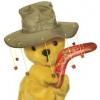
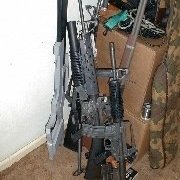

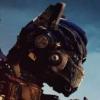
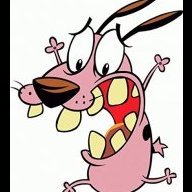

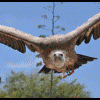
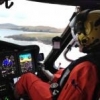
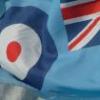

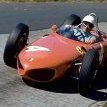

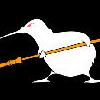
.thumb.jpg.0bac681e0da8e4ed7557610e98fda908.jpg)
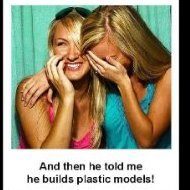
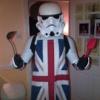


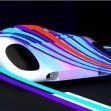
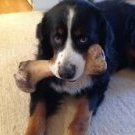

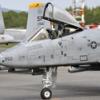


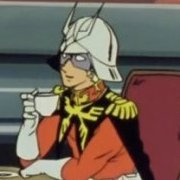

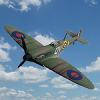
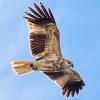



.thumb.png.6e11fc11af5645499ae76cb59fcfb788.png)

